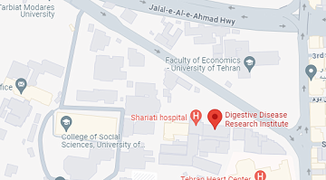Prevalence and risk factors of gastroesophageal reflux disease in Iran: A cross-sectional analysis from the PERSIAN cohort.

Prevalence and risk factors of gastroesophageal reflux disease in Iran: A cross-sectional analysis from the PERSIAN cohort
- PMID: 38990911
- PMCID: PMC11239034
Abstract
Background: This study assessed the prevalence of gastroesophageal reflux disease (GERD) in a general adult population in Iran. The association between GERD and various factors was also evaluated.
Methods: We performed a cross-sectional study on 163,018 individuals aged over 35 who were enrolled in the PERSIAN cohort. GERD was defined as the occurrence of heartburn and/or regurgitation symptoms at least several days a month. Survey design analysis for pooled data was performed and multiple regression analysis was conducted to determine the independent risk factors for GERD.
Results: The prevalence of GERD in our study was estimated at 21.86% (95% confidence interval:17.4%-36.4%). The mean age of the participants was 49.84 years±9.25 (35-70) and 44.75% of the participants were male. Symptoms of heartburn and regurgitation were reported in 18.65% (n: 29,170) and 6.06% (n: 9,717) of participants, respectively. In the multivariate analysis, several factors were found to be associated with a higher prevalence of GERD: female sex, age >50, current smoking, opium use, weekly consumption of fried foods, frequent consumption of hot tea, less than 6 hours of sleep per night, psychiatric disorders, usage of NSAIDs, and poor oral hygiene, were associated with a higher prevalence of GERD. Conversely, higher education levels and average physical activity were found to be less commonly associated with GERD.
Conclusion: We found a relatively high prevalence of GERD (21.86%) in this population-based study in Iran. By identifying modifiable risk factors, this research offers opportunities for targeted interventions and lifestyle modifications to reduce the burden of GERD.





ارسال به دوستان